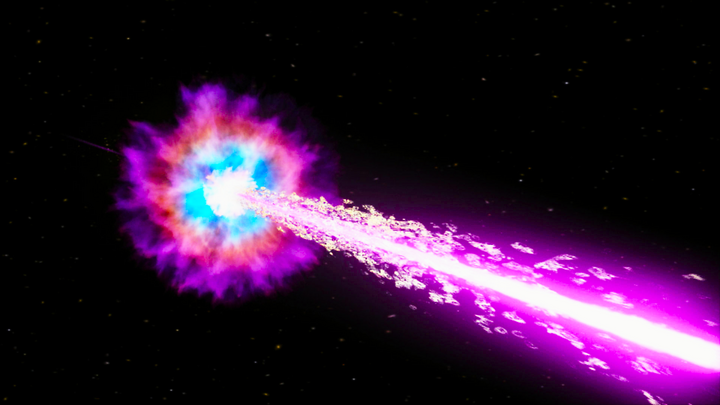Energy bursts that cause significant disturbances in Earth's ionosphere mostly come from the Sun, but the GRA 221009A explosion that occurred on October 9, 2022 was the result of a star exploding nearly two billion light-years from Earth.
Recently, researchers published a paper explaining what this gamma-ray burst GRA 221009A really means for our lives.

Astronomers say analyzing the impact of this gamma-ray burst could reveal information about mass extinction events throughout Earth's history. (Photo: NASA / Swift / Cruz de Wilde)
The 13-minute gamma-ray burst GRA 221009A, detected by the European Space Agency's Integrated Space Observatory (part of the International Gamma-ray Astrophysics Laboratory), caused a significant disturbance in the electric field energy in the Earth's ionosphere.
“We have been measuring gamma-ray bursts since the 1960s, and GRA 221009A is the most powerful one ever measured,” said paper co-author Pietro Ubertini, Integral’s IBIS instrument researcher. “It has a similar effect to the ionosphere as solar flares.”
The Earth's ionosphere is very sensitive to changes in the electric and magnetic field strength in space, often influenced by solar flares. It also expands and contracts in response to solar radiation.
Although this gamma-ray burst did not cause any adverse effects on life on Earth, it is hypothesized that a super-powerful gamma-ray burst originating from the Milky Way Galaxy heading straight for Earth could disrupt the Earth's atmosphere, causing a dangerous, catastrophic flood of harmful ultraviolet rays to hit the Earth's surface.
However, astronomer and study co-author Pietro Ubertini of the National Institute of Astrophysics in Italy said the chances of this happening are negligible.
HUYNH DUNG (Source: Reuters/Themessenger)
Source


![[Photo] General Secretary To Lam receives Chief of the Central Office of the Lao People's Revolutionary Party](https://vphoto.vietnam.vn/thumb/1200x675/vietnam/resource/IMAGE/2025/5/30/140435f4b39d4599a3d17975dfb444c5)

![[Photo] National Conference "100 years of Vietnamese Revolutionary Press accompanying the glorious cause of the Party and the nation"](https://vphoto.vietnam.vn/thumb/1200x675/vietnam/resource/IMAGE/2025/5/30/1cf6cd5c8a934ebfa347028dcb08358c)

![[Photo] A delegation of 100 journalists from the Vietnam Journalists Association visits the soldiers and people of Truong Sa island district.](https://vphoto.vietnam.vn/thumb/1200x675/vietnam/resource/IMAGE/2025/5/30/0984a986227d4e988177f560d2e1563e)
![[Photo] Journalists moved to tears at the Memorial Service for the soldiers who died in Gac Ma](https://vphoto.vietnam.vn/thumb/1200x675/vietnam/resource/IMAGE/2025/5/30/9454613a55c54c16bf8c0efa51883456)

























































































Comment (0)